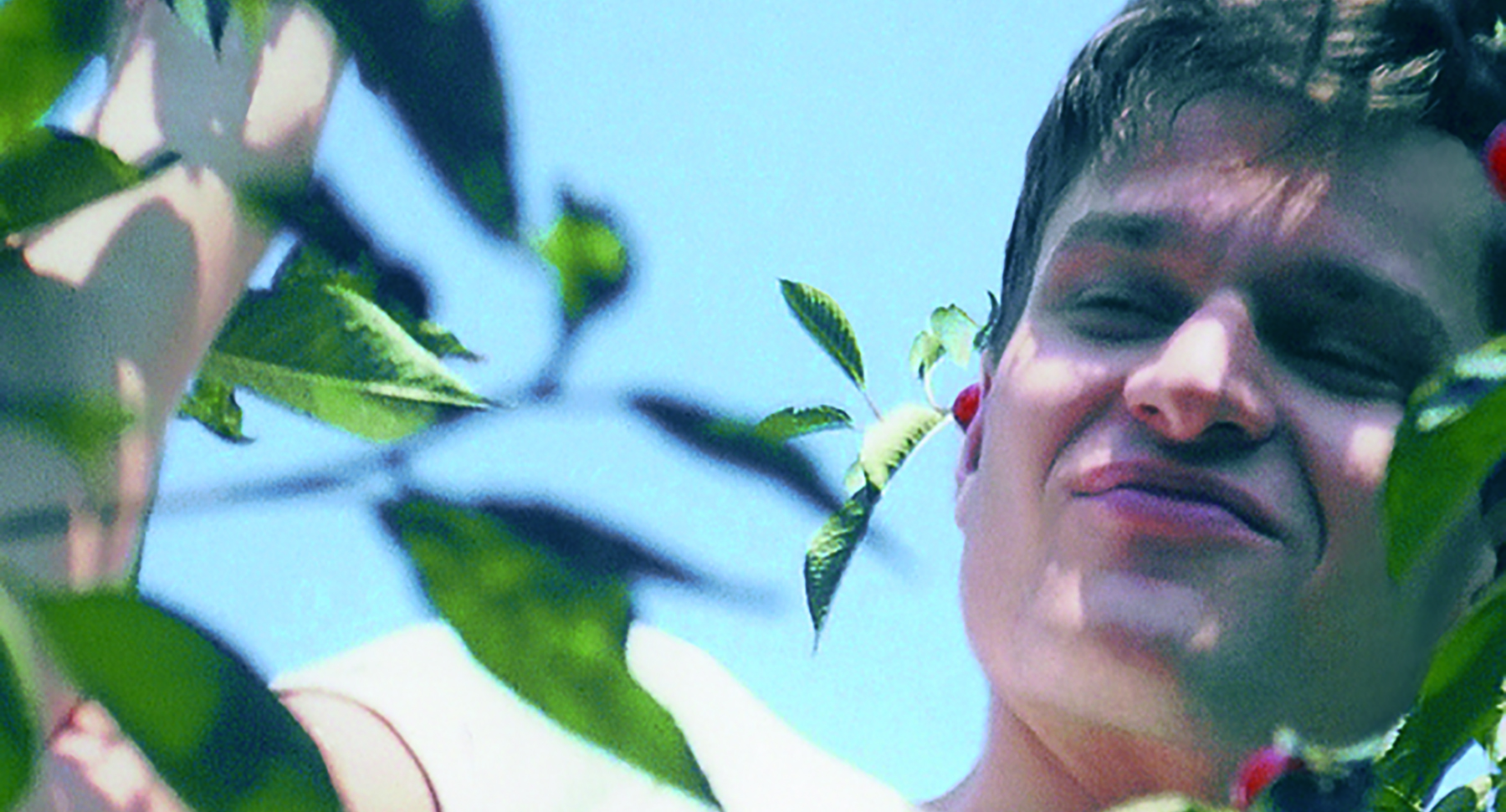Two items from the poet John Ashbery’s private collections appear on the cover for The Songs We Know Best. One is a yellow card from the early 1940s that his father, Chester “Chet” Ashbery, designed to advertise goods sold by the Ashbery Farm.

The other is a color photo that Chet, a serious amateur photographer, took of his son in a cherry tree. The beautifully made postcard signifies Chet’s pride in his orchard and farm, a seventy-five-acre property in Sodus, a small rural village thirty miles east of Rochester. The close-up shows a young John Ashbery picking cherries high up in a tree, a farm chore he was required to do each summer, though he took little joy in the annual task. Chet’s father had purchased the farm for the family in 1914; by the time Chet took this picture in the 1940s, he knew that his son had no desire to run it.
The photograph captures cherry season’s vivid colors, probably the most beautiful time of the year on the farm. Returning home from Harvard College for the summer, John Ashbery described languid days in late June just before cherries ripened: “nothing to do except sit on the front porch and gaze at a monotonous expanse of orchard, soon to blush red with cherries.” By mid-July, however, he knew his placid mood—a tranquil, dream-like feeling in which he liked to imagine new poems—was about to end: “I’m feeling very relaxed and fresh, and am waiting for the beginning of the cherry season week after next to reduce me to a nervous jelly.” Peak season occurred at the end of July and was the busiest period on the farm for everyone. By the age of fourteen, Ashbery was expected to help pick fruit, and it was very hard work carrying heavy ladders from tree to tree all day long in high summer heat.
Later, Ashbery devises an ideal escape from farm chores in poetry. Recalling those years of required toil, he closes “In the Time of Cherries” with plans for how to avoid the work:
I’ll be back in August,
after the cherries have left.
How motivated is that?
From a safe distance of many years, he can frame his earlier distaste for farm work with some whimsy. As a young man, however, he felt anxious about his desire to flee from farm life.
If only trees could remain in some beautiful state of becoming! He writes jocularly of a childhood happiness among trees: “So my youth was spent, underneath the trees / I always moved around with perfect ease” (“Variations, Calypso and Fugue . . . ”). For even before he began to write poetry, he felt in communion with those trees. It seemed to him that they were silently communicating something intrinsic about thought and imagination that he needed to understand. He listened closely to what they suggested: “Slowly / The trees increased the novelty of always being alone” (“Business Personals”). The vast expanse of trees could even provide, to one who could read them, a map to guide the weary traveler home; apple orchards, perfectly arranged in patterns of five, like spots on a pair of dice, oriented the wanderer: “‘I was lost, but seemed to be coming home, / Through quincunxes of apple trees . . .’” (“A Wave”). Although John Ashbery, the son of the farmer, wanted no part of his inheritance, the poet needed these family trees to renew his memory of the landscape and as a source of his originality.
Although John Ashbery, the son of the farmer, wanted no part of his inheritance, the poet needed these family trees to renew his memory of the landscape and as a source of his originality.
The cover of the book subtly conveys this double meaning of family trees. Jonathan Galassi chose the cover photo—it had initially been part of a later chapter—and then designer Sarahmay Wilkinson elegantly incorporated the specter of Chet Ashbery’s yellow advertisement card. The original was in a small stack at the bottom of a box in John Ashbery’s Hudson house attic when I spotted it one afternoon in 2009. Stirred by the card’s precise loveliness, I brought it downstairs to ask John some questions. His childhood diaries and letters had suggested that Chet was a mean, obstinate figure, but our conversation about the inventive business owner who proudly advertised goods he sold on his farm was the beginning of a more nuanced picture of the man.
Although the painter Fairfield Porter thought that John Ashbery derived his voice and looks from his mother, the poet was considerably more like his father than he wished to believe as a young man. While Chet was a rather tough, often-angry disciplinarian, he was also a highly creative, self-educated inventor. He designed the exquisite Ashbery Farm sign that still hangs outside the farmhouse. He also devised humane pens to keep the farm’s turkeys and created a soothing stone water fountain in the backyard of the house. Later, he taught himself woodworking, set up shop in his barn and eventually built a working boat. Even this yellow card was cleverly made: its flip side is covered in blotting paper and meant to serve a useful function for his clientele so they will always keep it handy. The two images on the book’s cover together link father and son at the source of their conflict and connection. Each observed the orchard and farm closely, though their different modes of expressing their particular attachment kept them from recognizing what they shared.
Karin Roffman has taught literature at Yale, West Point, and Bard, and is the author of From the Modernist Annex. She lives in New Haven, Connecticut.
Read all of our Poetry Month coverage here
Excerpts from John Ashbery’s unpublished interviews, letters, texts, and images, as well as published poems quoted here, are copyright © 2017 by John Ashbery. All rights reserved. Used by arrangement with Georges Borchardt, Inc. for the author.

